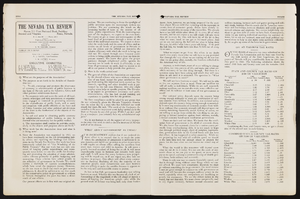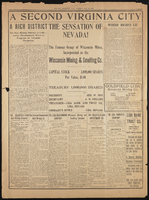Search the Special Collections and Archives Portal
Search Results
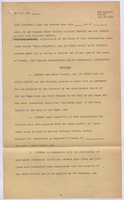
Contract between the Union Pacific and Los Angeles & Salt Lake Railroad Companies, and the Las Vegas Valley Water District, August 29, 1952
Date
Archival Collection
Description
Second redraft of contract for the Las Vegas Valley Water District to remove all power lines and water pipelines from railroad property after a yet to be agreed upon number of months.
Text
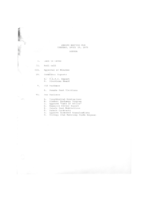
Meeting minutes for Consolidated Student Senate, University of Nevada, Las Vegas, April 29, 1975
Date
Archival Collection
Description
Text

Transcript of interview with Gwen Walker by Claytee White, July 15, 2014
Date
Archival Collection
Description
Gwendolyn K. Walker arrived in North Las Vegas in 1962 from Houston, Texas, as a five-year-old with her parents, two brothers, and her cousins. The Walker family at first moved to a rented house on D Street, and Gwen attended Kit Carson Elementary School for first grade. Her mother enrolled in nursing school, so she sent Gwen back to Delhi, Louisiana, to be raised by her grandmother. In Delhi Gwen picked cotton with her aunt while she was in the second grade. Gwen returned to North Las Vegas to live with her mother and complete elementary school at Jo Mackey before matriculating to J. D. Smith Elementary School for junior high school and then to Clark High School. Later she attended UNLV. Gwen and her mother joined Saint James Catholic Church at H Street and Washington Avenue, but after she returned from Delhi she joined Second Baptist Church, where she became close with a cohort of friends that remained strong even as she experienced racism and bullying and love for the first time.
Text
Bethany Khan, Ken Liu, and Zachary Poppel (Culinary Union) oral history interview conducted by Elia Del Carmen Solano-Patricio: transcript
Date
Archival Collection
Description
From the Lincy Institute "Perspectives from the COVID-19 Pandemic" Oral History Project (MS-01178) -- Business interviews file.
Text
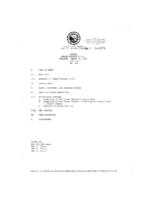
Meeting minutes for Consolidated Student Senate University of Nevada, Las Vegas, March 14, 1991
Date
Archival Collection
Description
Text

Transcript of interview with Joe Burton by Bob Barrera, March 11, 1980
Date
Archival Collection
Description
Text
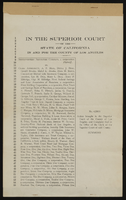
Superior Court of California summons
Date
Archival Collection
Description
Text
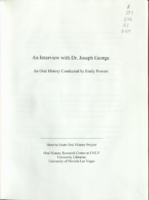
Transcript of interview with Dr. Joseph George Jr. by Emily Powers, April 8, 2008
Date
Archival Collection
Description
Text

